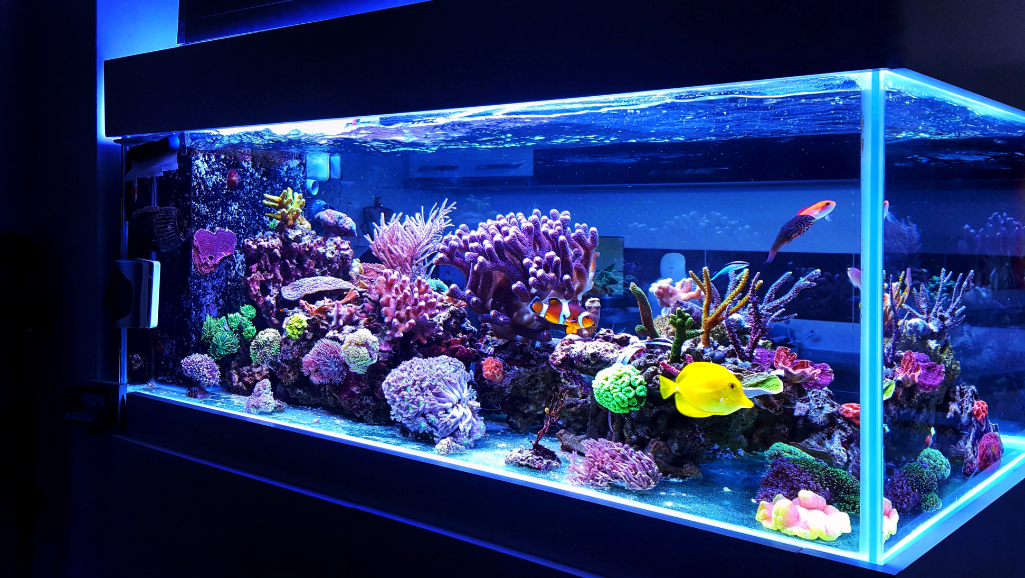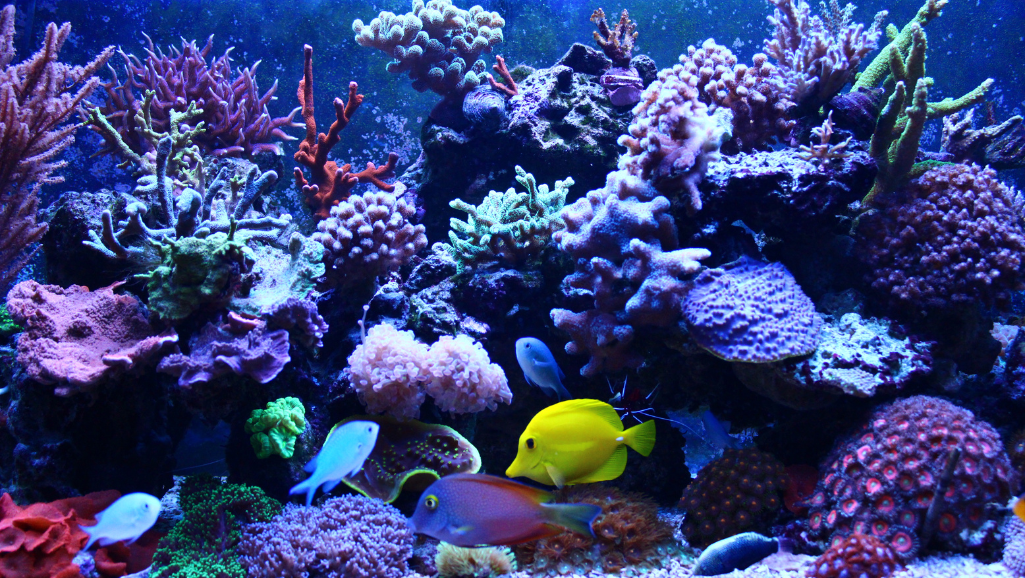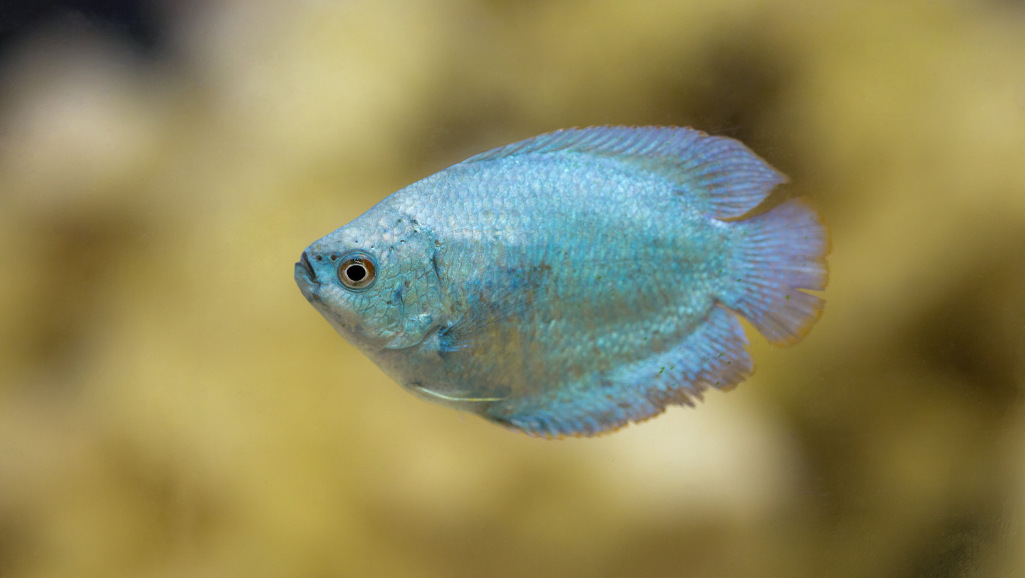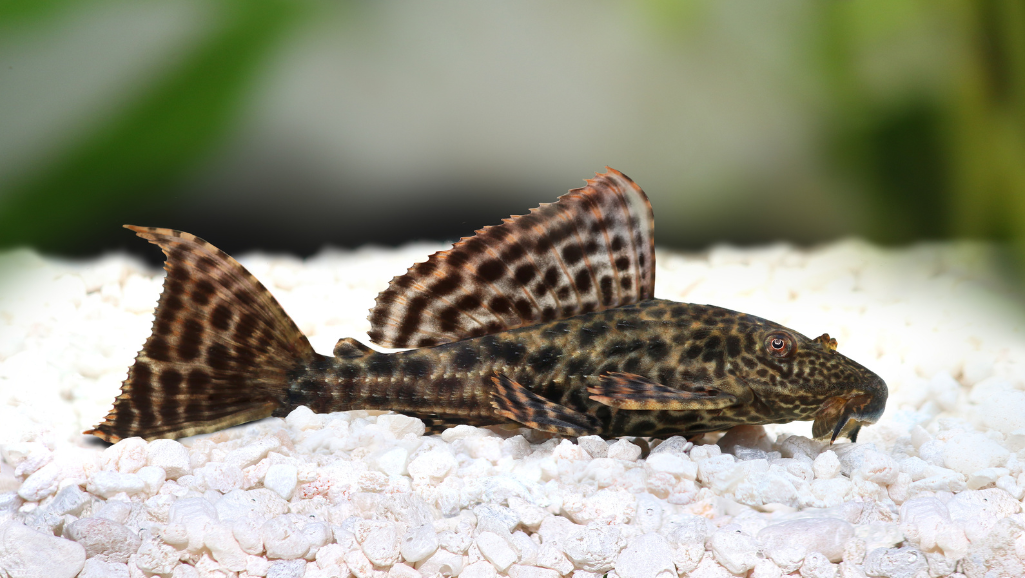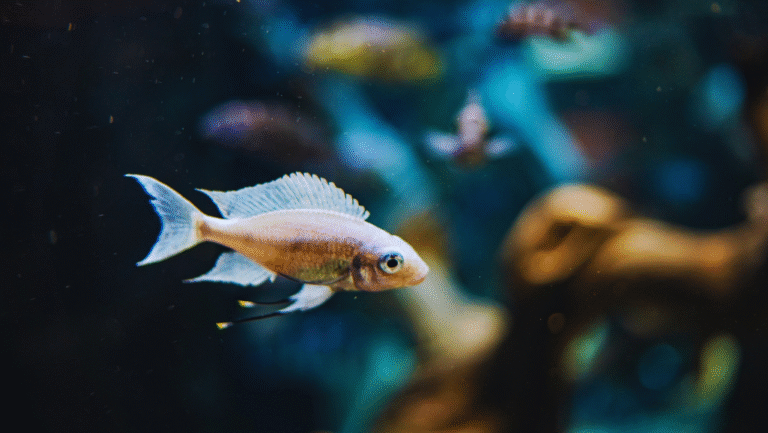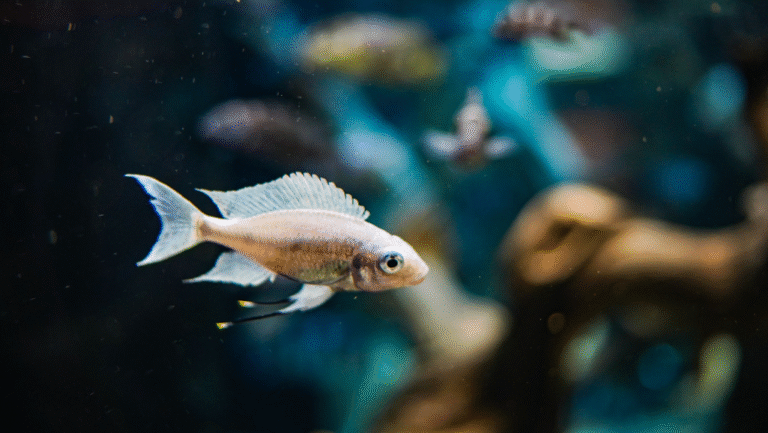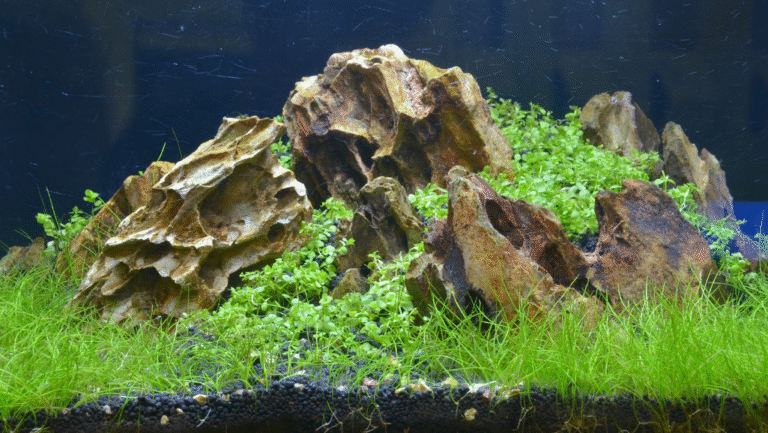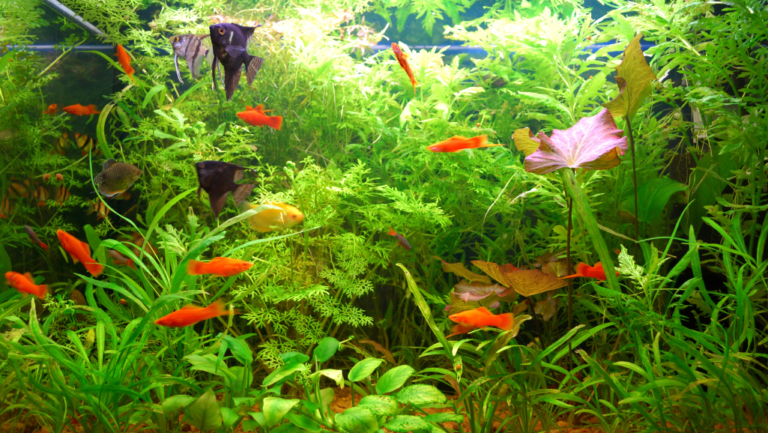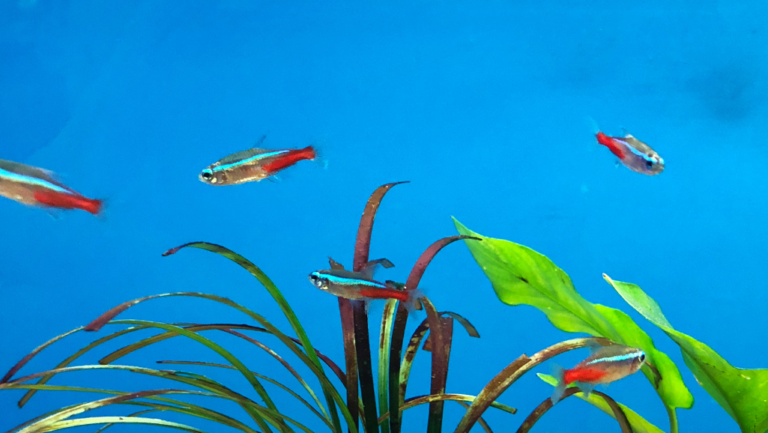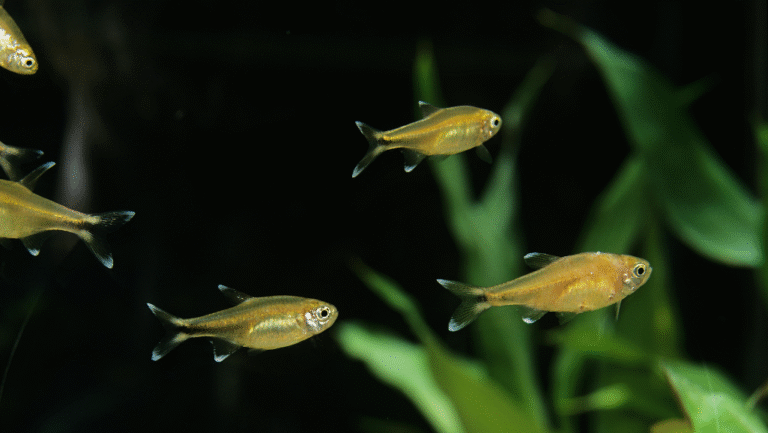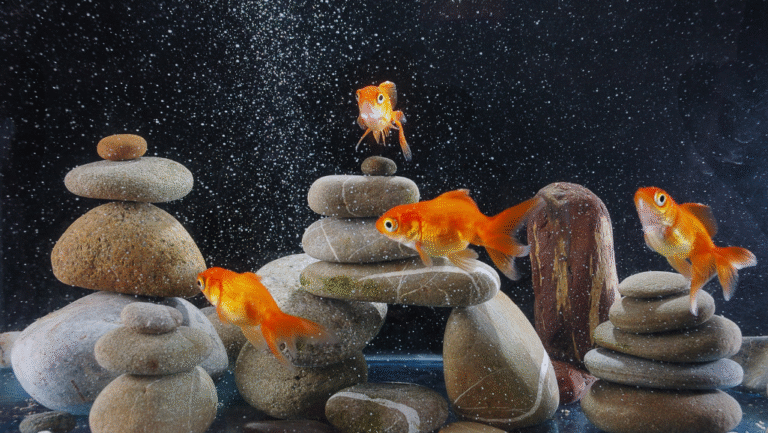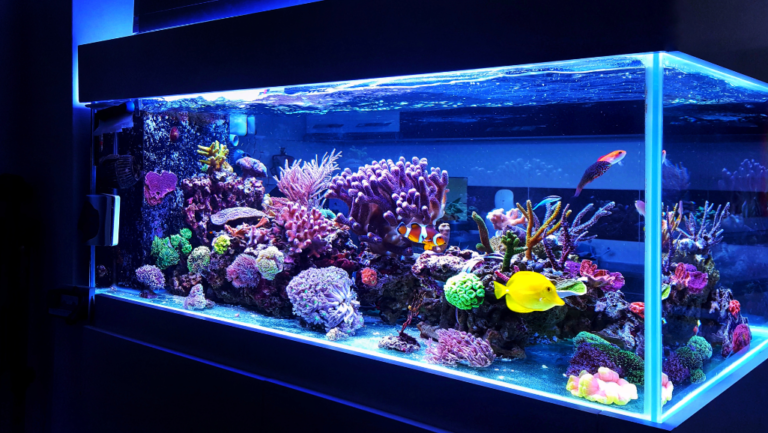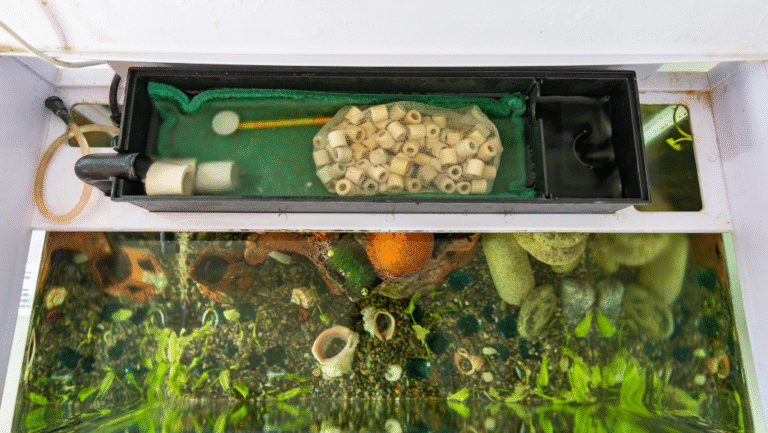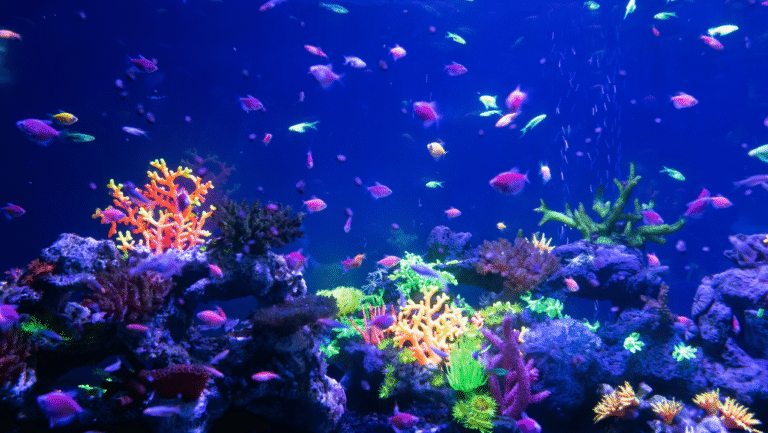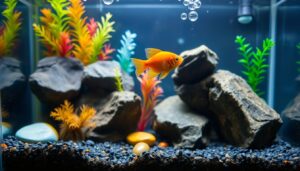Choosing the right aquarium setup can be both exciting and challenging. A 10-gallon tank is a popular choice for beginners and experienced hobbyists alike. Its compact size makes it easy to maintain, rearrange, and fit into small spaces. Whether you’re looking to create a vibrant display or a peaceful retreat, this size offers versatility and practicality.
This guide will help you select the best fish for your setup. You’ll learn about species that thrive in smaller environments, their care requirements, and how to maintain optimal water conditions. From colorful neon tetras to active fish, there’s a wide variety to explore. Understanding tank size and water parameters is essential for creating a healthy habitat.
We’ll also cover topics like ideal tank mates, breeding tips, and stocking advice. Whether you’re starting your first aquarium or expanding your collection, this guide ensures you make informed decisions. Dive in and discover the possibilities of a 10-gallon aquarium!
Key Takeaways
- Fish That Can Live in 10 Gallon Tanks.
- A 10-gallon tank is versatile and easy to maintain.
- Choose species that thrive in smaller environments.
- Water quality and parameters are crucial for fish health.
- Neon tetras and other colorful fish are great options.
- This guide covers care, breeding, and stocking tips.
Introduction
Setting up a small aquarium offers endless possibilities for creativity and relaxation. A 10-gallon tank is an excellent choice for both beginners and seasoned hobbyists. Its compact size makes it easy to manage while still providing a vibrant underwater world.
Understanding basic aquarium terminology is essential. Terms like water parameters, filtration, and stocking density are key to maintaining a healthy environment. Many beginners fall for the “1 inch per gallon” myth, but this rule doesn’t account for the specific needs of different species.
Plenty of species thrive in smaller setups. For example, neon tetras and guppies are popular choices. These freshwater fish are colorful, active, and well-suited to a 10-gallon environment. Proper care and attention to water quality ensure they flourish.
This guide will help you learn about:
- Species that thrive in small tanks.
- Optimal water conditions and maintenance tips.
- Common misconceptions and how to avoid them.
Whether you’re starting your first aquarium or refining your skills, this guide provides practical advice for success.
What Makes a 10-Gallon Tank Unique?
A 10-gallon aquarium stands out for its balance of size and functionality. Its compact design makes it easy to move and set up, perfect for beginners or those with limited space. Unlike larger setups, this size is manageable and less intimidating for first-time hobbyists.
The smaller volume of water requires less maintenance, but it also means water parameters must be monitored closely. Understanding the relationship between water volume and measurements is crucial for maintaining a healthy environment. Even with its modest size, a 10-gallon tank can host a variety of species if planned carefully.
Compared to larger aquariums, a 10-gallon setup is easier to clean and maintain. Its size also allows for creative decorating without overwhelming the space. Proper planning ensures that each species has enough room to thrive, preventing overcrowding and stress.
Understanding the importance of size is key to creating a harmonious environment. Smaller tanks like the 10-gallon option are ideal for showcasing specific species or creating a focused aquatic display. With the right care, this setup can be both visually stunning and easy to manage.
Understanding the Aquarium Environment
Creating a thriving aquarium environment requires attention to detail and understanding key factors. A balanced setup ensures healthy aquatic life and vibrant colors. Proper water conditions, temperature, and maintenance play a critical role in achieving this balance.
Water quality directly impacts the health and appearance of your aquatic inhabitants. Poor conditions can lead to stress, illness, and dull colors. Regular monitoring of parameters like pH, hardness, and temperature is essential. For example, tropical species thrive in temperatures between 72°F and 80°F.
Substrates and decor also influence the tank’s environment. Gravel or sand provides a natural look and supports beneficial bacteria. Plants and hiding spots reduce stress and mimic natural habitats. These elements contribute to a stable and visually appealing setup.
Maintenance is crucial for small aquariums. Regular water changes, typically 25% weekly, help control nitrate levels. Testing water parameters ensures a safe environment. Overfeeding and overstocking should be avoided to prevent waste buildup.
Here are some recommended water parameters for a healthy setup:
- pH: 6.8 to 7.8 for freshwater species.
- Temperature: 72°F to 80°F for tropical fish.
- Nitrate levels: Below 40 ppm.
By focusing on these factors, you can create a thriving aquarium that supports vibrant life and stunning visuals. Proper care ensures a rewarding experience for both beginners and experienced hobbyists.
Selecting Suitable Fish for Small Tanks
Selecting the right aquatic species for a compact setup requires careful consideration. A small aquarium offers limited space, making it essential to choose inhabitants that thrive in such environments. Understanding factors like adult size, temperament, and bioload ensures a harmonious and healthy ecosystem.
Overstocking is a common mistake that can lead to stress and poor water quality. Researching the adult size of each species helps prevent overcrowding. For example, neon tetras and guppies are excellent choices due to their small size and peaceful nature. These species also prefer to live in groups, adding vibrancy to your tank.
Compatibility is another critical factor. Some species thrive in community setups, while others may require specific conditions. For instance, dwarf gouramis are colorful centerpieces but may not coexist well with aggressive tank mates. Always consider the temperament and habitat needs of each species before making a choice.
Water quality is directly impacted by the species you select. High-bioload fish can quickly overwhelm a small tank, leading to frequent maintenance. Opting for low-bioload species like cherry shrimp or white cloud mountain minnows ensures a balanced environment. Regular monitoring of water parameters is still essential for long-term success.
Making an informed choice involves understanding the unique needs of each species. For more insights, explore our guide on the best fish for small tanks. By focusing on compatibility, size, and bioload, you can create a thriving and visually appealing aquarium.
Fish That Can Live in 10 Gallon Tanks: Essential Criteria
Selecting aquatic species for a compact setup involves understanding key criteria. A small aquarium offers limited space, making it crucial to choose inhabitants that thrive in such environments. Factors like adult size, bioload, and behavioral compatibility play a significant role in creating a harmonious ecosystem.
One of the most important considerations is the adult size of the species. Overcrowding can lead to stress and poor water quality. For example, smaller species like neon tetras and guppies are ideal due to their compact size and peaceful nature. Always research the adult size of each species to ensure they have enough room to thrive.
Bioload management is another critical factor. High-bioload species can quickly overwhelm a small tank, leading to frequent maintenance. Opting for low-bioload inhabitants like cherry shrimp or white cloud mountain minnows helps maintain water quality. Regular monitoring of parameters like pH and nitrate levels is essential for long-term success.
Behavioral compatibility is equally important. Some species thrive in community setups, while others may require specific conditions. For instance, dwarf gouramis are colorful centerpieces but may not coexist well with aggressive tank mates. Understanding the temperament and habitat needs of each species ensures a balanced environment.
Here are the essential criteria for selecting species for a small setup:
- Adult Size: Choose species that remain small as they grow.
- Bioload: Opt for low-bioload species to maintain water quality.
- Behavior: Ensure compatibility among tank mates.
- Water Quality: Monitor parameters regularly for a healthy environment.
By focusing on these criteria, you can create a thriving and visually appealing aquarium. Proper planning ensures that each species has enough space and resources to flourish, making your small tank a vibrant underwater world.
Neon Tetra: A Vibrant Schooling Option
Neon tetras bring a burst of color and energy to any aquarium. These small, shimmering fish are a favorite among aquarists for their striking blue and red stripes. Native to the Amazon Basin, they thrive in soft, slightly acidic water, making them ideal for carefully maintained setups.
Their natural habitat includes slow-moving blackwater streams, rich in tannins and vegetation. Replicating these conditions in your tank ensures their health and vibrancy. A group of at least six neon tetras is recommended to mimic their schooling behavior and reduce stress.
Ideal Tank Mates
Neon tetras are peaceful and thrive in community setups. Ideal companions include other small, non-aggressive species like guppies, cherry shrimp, and white cloud mountain minnows. Avoid pairing them with larger or territorial fish, as their delicate nature makes them vulnerable.
Their schooling behavior adds movement and life to the aquarium. When kept in groups, they display synchronized swimming patterns, creating a mesmerizing display. This makes them a perfect choice for hobbyists seeking a dynamic and visually appealing tank.
Water Parameters and Care
Maintaining optimal water conditions is crucial for neon tetras. They prefer a pH between 6.0 and 7.0 and a temperature range of 72°F to 76°F. Regular water changes, at least 20-30% weekly, help keep nitrate levels low and ensure a healthy environment.
Feeding neon tetras a varied diet of high-quality flakes, micro pellets, and occasional live or frozen foods enhances their coloration and vitality. Overfeeding should be avoided to prevent water quality issues. With proper care, these vibrant fish can live up to 5 years, bringing joy and beauty to your aquarium.
Ember Tetra: Tiny Yet Striking
The ember tetra is a dazzling addition to any compact aquarium. With its fiery orange-red hue, this small species adds a burst of color to your setup. Reaching only about 0.8 inches in size, it’s perfect for nano tanks and smaller environments.
These vibrant creatures are not just visually appealing but also easy to care for. Their gentle nature makes them ideal for community setups. They thrive in groups, so keeping at least six together ensures they feel secure and display their best behavior.
Size and Maintenance Tips
Due to their diminutive size, ember tetras require minimal space but still benefit from a well-maintained environment. A 10-gallon setup is sufficient for a small group. Regular water changes, around 20-30% weekly, help maintain optimal water quality.
Temperature regulation is crucial. These species prefer a range of 72°F to 84°F. Soft to moderately hard water with a slightly acidic to neutral pH ensures their health and vibrancy. Monitoring these parameters prevents stress and promotes longevity.
Their small size also influences compatibility. They coexist well with other peaceful species like cherry shrimp or small danios. Avoid pairing them with larger or aggressive tank mates to ensure harmony.
For more detailed insights, learn more about ember tetras. With proper care, these tiny yet striking creatures can transform your aquarium into a vibrant underwater world.
Dwarf Gourami: A Colorful Centerpiece
Adding a vibrant centerpiece to your aquarium can transform its entire look and feel. The dwarf gourami is a perfect choice for this role. With its stunning blue and orange hues, this species adds a pop of color and activity to any setup.
These small, labyrinth fish are known for their unique patterns and peaceful nature. They thrive in well-maintained environments, making them ideal for aquarists of all experience levels. Their striking appearance and lively behavior make them a standout addition to any tank.
Setting Up a Compatible Habitat
Creating the right environment for dwarf gouramis is essential for their health and vibrancy. Start with a tank that provides ample swimming space and hiding spots. Plants like java fern or anubias mimic their natural habitat and enhance their colors.
Water quality is crucial. Maintain a temperature between 72°F and 82°F and a pH level of 6.0 to 7.5. Soft to moderately hard water ensures their comfort. Regular water changes, around 25% weekly, help keep nitrate levels low.
Choosing the right type of décor is also important. Driftwood and rocks create natural hiding spots, while floating plants diffuse light, replicating their native environment. These elements not only support their well-being but also highlight their beauty.
When selecting tank mates, opt for peaceful species like neon tetras or cherry shrimp. Avoid aggressive or territorial companions to ensure harmony. With the right setup, dwarf gouramis can thrive and become the centerpiece of your aquatic display.
Betta Fish: Bold and Beautiful
Betta fish are known for their striking colors and unique personalities. These vibrant creatures, with their flowing fins and bold hues, make a stunning addition to any aquarium. Their beauty, however, comes with specific care requirements, especially regarding temperament and tank mates.
Behavior and Temperament Considerations
Male bettas are particularly known for their territorial nature. They often display aggression toward other males and even some species with similar fin structures. For this reason, it’s best to house them alone or with carefully chosen companions.
In a 10-gallon setup, providing ample space and hiding spots can help reduce stress and aggression. Plants, either real or artificial, create barriers and safe zones, allowing the betta to establish its territory without conflict.
Ideal Tank Conditions
Maintaining optimal water conditions is crucial for betta health. They thrive in temperatures between 74°F and 79°F, with a slightly acidic to neutral pH. Regular water changes and a high-protein diet ensure their vibrant colors and longevity.
Here are some key tips for housing bettas:
- Space: A 10-gallon tank provides enough room for swimming and territorial behavior.
- Companions: Choose peaceful, non-nipping species like cherry shrimp or snails.
- Decor: Include plants and hiding spots to reduce stress and mimic their natural habitat.
By understanding their needs and behavior, you can create a harmonious environment for your betta. With proper care, these bold and beautiful fish can thrive and become the centerpiece of your aquarium.
Guppies and Platies: Live-Bearing Beauties
Guppies and platies are a favorite among aquarists for their vibrant colors and lively personalities. These live-bearing species are perfect for beginners and experienced hobbyists alike. Their adaptability and striking appearance make them a popular choice for small setups.
When stocking a 10-gallon setup, it’s essential to avoid overcrowding. A group of 6-8 guppies or platies is ideal for maintaining balance. These species thrive in community environments, adding energy and color to your aquarium.
Breeding and Stocking Guidelines
To encourage healthy breeding, maintain an optimal male-to-female ratio. For guppies and platies, a ratio of 1 male to 2-3 females is recommended. This reduces stress on the females and ensures successful reproduction.
Managing fry is crucial to prevent overpopulation. Provide plenty of hiding spots with plants or decorations to protect the young. Alternatively, consider a separate breeding tank to control the population effectively.
Both guppies and platies are known for their hardy nature and fancy traits. They adapt well to various water conditions, making them low-maintenance options. For more insights on fancy aquarium fish, explore our detailed guide.
With proper care, these live-bearing beauties can transform your aquarium into a vibrant and dynamic display. Their charm and adaptability make them a must-have for any aquatic enthusiast.
Celestial Pearl Danio and Active Danios
Celestial Pearl Danios bring a lively energy to any aquarium with their vibrant colors and active behavior. These small, shimmering creatures are perfect for adding movement and color to your setup. Their striking patterns and playful nature make them a favorite among aquarists.
Known for their schooling behavior, these active fish thrive in groups of six or more. Keeping them in a group enhances their natural behavior and reduces stress. Their energetic swimming patterns create a dynamic and engaging display in your tank.
To provide an ideal environment, ensure your setup has plenty of swimming space. A 10-gallon tank is suitable for a small group. Add plants like java moss or anubias to mimic their natural habitat and provide hiding spots. These elements also enhance the visual appeal of your aquarium.
Maintaining proper water conditions is crucial. Celestial Pearl Danios prefer a temperature range of 72°F to 76°F and a pH level between 6.5 and 7.5. Soft to moderately hard water ensures their comfort. Regular water changes and monitoring of parameters keep them healthy and vibrant.
These active fish are compatible with other peaceful species like neon tetras and cherry shrimp. Avoid pairing them with larger or aggressive tank mates to maintain harmony. Their lively nature makes them a great addition to community setups.
Here are some care tips for Celestial Pearl Danios:
- Group Size: Keep at least six together for natural behavior.
- Décor: Use plants and hiding spots to reduce stress.
- Water Flow: Ensure gentle water movement to mimic their natural habitat.
- Diet: Offer a varied diet of high-quality flakes and live or frozen foods.
With their vibrant colors and active behavior, Celestial Pearl Danios are a fantastic choice for any aquarium. Their lively presence adds both beauty and energy to your aquatic world.
Bottom-Dwellers: Plecos and Other Cleaners
Bottom-dwelling species play a vital role in keeping your tank clean and thriving. These aquatic helpers, like plecos and snails, are essential for maintaining a balanced ecosystem. They efficiently consume algae, leftover food, and debris, reducing the need for frequent cleaning.
When selecting bottom-dwellers, size is a critical factor. Smaller species, such as the bristlenose pleco, are ideal for compact setups. Unlike common plecos, which can grow too large, bristlenose varieties stay around 4 to 5 inches, making them suitable for smaller environments.
Pairing bottom-dwellers with mid-water species requires careful planning. Peaceful companions like neon tetras or guppies work well, ensuring harmony in the tank. Avoid aggressive or territorial species that may stress these cleaners.
Adding bottom-dwelling species offers several benefits:
- Algae Control: Plecos and snails keep algae growth in check.
- Waste Management: They consume leftover food and debris, maintaining water quality.
- Natural Behavior: Their activity adds diversity and interest to the aquarium.
For optimal care, provide a habitat with hiding spots and smooth substrates. Regular water changes and monitoring of parameters ensure their health. With the right setup, bottom-dwellers like plecos can transform your tank into a clean and vibrant aquatic world.
Mastering Stocking and Space Requirements
Understanding the space needs of your aquatic pets is crucial for their well-being. Proper stocking ensures a healthy and balanced environment, preventing stress and overcrowding. A common misconception is the “1 inch per gallon” rule, which oversimplifies the process. Let’s explore a more accurate approach to stocking your tank.
The “1 Inch per Gallon” Rule Demystified
The “1 inch per gallon” rule has been widely used but is now considered outdated. This guideline doesn’t account for factors like bioload, behavior, or adult size. For example, a species with a high bioload can quickly overwhelm a small tank, even if it fits the rule. Instead, focus on the adult length and overall needs of each species.
Accurate measurement is key. Always research the adult size of your aquatic pets before adding them to your setup. This ensures they have enough space to thrive and reduces the risk of overcrowding. Proper planning leads to a healthier and more harmonious environment.
Measuring Adult Fish Size
Predicting the adult length of your aquatic species is essential for long-term success. Many species grow significantly larger than their juvenile size. For instance, a small pleco can grow to over 12 inches, making it unsuitable for a compact tank. Always consider the final size when planning your setup.
Here’s how to measure and plan effectively:
- Research: Look up the adult size of each species before purchase.
- Space: Ensure your tank can accommodate their adult length and swimming needs.
- Bioload: Calculate the total bioload to maintain water quality.
By focusing on accurate measurement and planning, you can create a thriving aquatic environment. Proper stocking ensures your pets have the space and resources they need to flourish.
Tips for Feeding and Maintaining Your Tank
Maintaining a healthy aquarium starts with proper feeding and regular maintenance. A balanced diet ensures your aquatic pets stay vibrant and active. High-quality food plays a crucial role in their overall health and longevity. Choose pellets, flakes, or frozen options that cater to the specific needs of your species.
Feeding schedules are equally important. Overfeeding can lead to water quality issues, so stick to small portions twice a day. Remove uneaten food promptly to prevent waste buildup. This practice keeps your tank clean and reduces the risk of harmful bacteria.
Regular cleaning routines are essential for a thriving environment. Perform water changes of 15-25% every 1-2 weeks to maintain optimal conditions. Use a gravel vacuum during water changes to remove debris from the substrate. This prevents nitrate buildup and keeps the water clear.
Invertebrates like shrimp are excellent additions to your cleanup crew. They consume algae and leftover food, reducing the need for frequent cleaning. Species like cherry shrimp are peaceful and thrive in community setups. Their presence adds both functionality and visual appeal to your aquarium.
Here are some key tips for feeding and maintenance:
- Diet: Provide a varied diet tailored to your species’ needs.
- Feeding: Stick to small portions twice a day and remove uneaten food.
- Cleaning: Perform regular water changes and gravel vacuuming.
- Cleanup Crew: Add shrimp or snails to manage algae and debris.
By following these tips, you can create a clean, healthy, and vibrant environment for your aquatic pets. Proper feeding and maintenance ensure they thrive and bring joy to your aquarium.
Enhancing Your Aquarium with Live Plants and Decor
Incorporating live plants into your aquarium transforms it into a thriving, natural ecosystem. These additions not only enhance the visual appeal but also contribute to the overall health of your aquatic environment. From improving water quality to providing hiding spots, plants play a vital role in creating a balanced and vibrant setup.
Benefits of Natural Planting
Live plants offer both aesthetic and functional advantages. They absorb harmful nitrates and carbon dioxide, improving water quality. This creates a healthier environment for your aquatic pets. Additionally, plants provide natural hiding spots, reducing stress and promoting natural behavior.
Choosing the right plants is essential for a small setup. Species like Java Fern and Anubias are low-maintenance and thrive in compact environments. These plants require minimal light and care, making them ideal for beginners. Dense planting also helps mimic natural habitats, enhancing the overall look of your aquarium.
Role of Decor in a Balanced Ecosystem
Decor elements like driftwood and rocks add texture and depth to your setup. They create natural barriers and hiding spots, fostering a sense of security for your aquatic pets. When combined with live plants, decor transforms your aquarium into a visually stunning and functional space.
Here are some tips for selecting and maintaining aquatic plants:
- Lighting: Ensure your setup has adequate lighting for plant growth.
- Substrate: Use nutrient-rich substrates to support root development.
- Pruning: Regularly trim plants to prevent overgrowth and maintain balance.
By integrating live plants and decor, you create a more natural and vibrant aquarium. This approach not only enhances the beauty of your setup but also supports the well-being of your aquatic pets. With proper care, your aquarium will flourish as a thriving underwater world.
Creating a Harmonious Community in Your 10-Gallon Aquarium and Conclusion
Building a thriving aquatic community in a compact space requires thoughtful planning and attention to detail. A harmonious setup begins with selecting compatible species and ensuring each has enough room to thrive. Proper stocking levels and monitoring behavior are key to maintaining balance and reducing stress.
Strategies like adding hiding spots and grouping peaceful species together foster a calm environment. Regular observation helps identify and address any signs of aggression or discomfort. By following these practices, even a small tank can host a vibrant and diverse community.
For more insights on creating a harmonious setup, explore our guide on aquarium compatibility. With the right care and planning, your aquarium can become a peaceful underwater world. Share your experiences and tips in the comments below!
